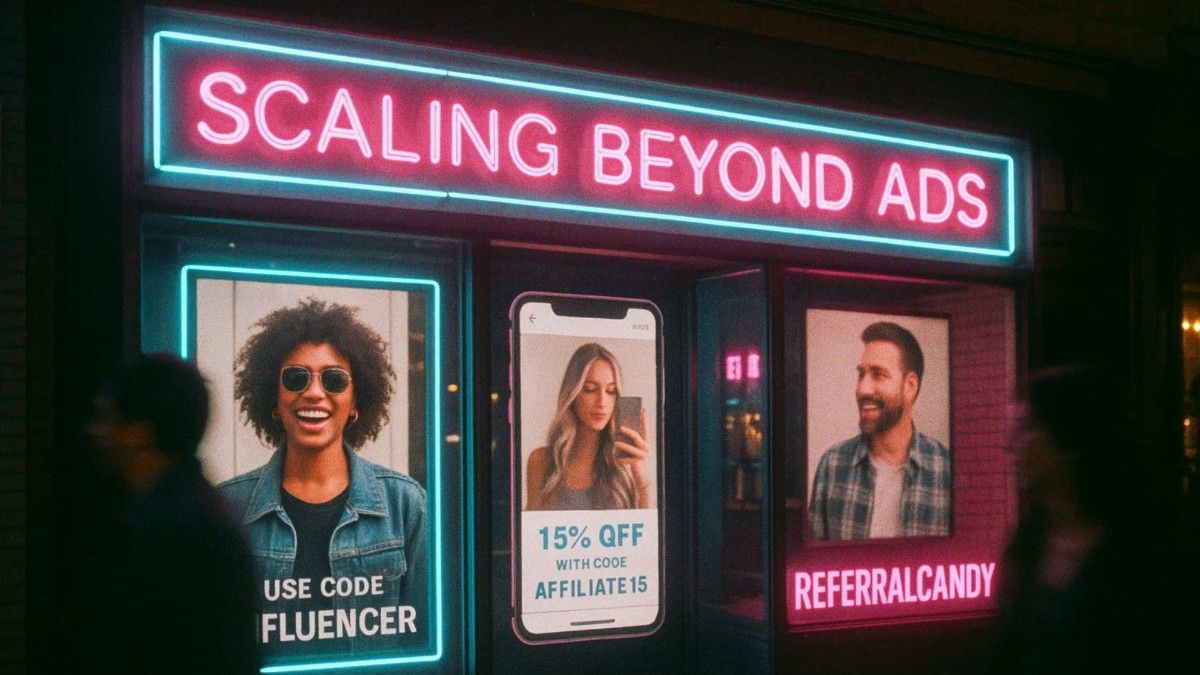
Quick answer: A strong affiliate acquisition strategy helps brands diversify growth channels, reduce ad dependency, and reach new audiences without inflating CAC.
Ad costs are climbing—Shopify CPMs rose over 25 % YoY in 2025. For many eCommerce brands, customer acquisition has become less predictable and more expensive. An affiliate acquisition strategy shifts part of that budget into performance-based partnerships, where you only pay for results.
Affiliate programs aren’t just for coupon sites anymore. Today’s affiliates include creators, review blogs, niche publishers, and loyal customers who can authentically drive sales at lower cost.
Paid ads are great for reach, but risky for growth if they’re your only engine. Algorithm changes, privacy rules, and auction-based bidding mean costs fluctuate overnight.
Affiliates, on the other hand, diversify customer acquisition by connecting you to audiences already built around trust. They convert because recommendations come from credible voices, not faceless ads.
A balanced mix of paid and affiliate channels gives your business three advantages:
Brands using affiliate channels typically report 10 – 30 % of total revenue driven by performance partnerships.
Know your average profit per order before setting rates. A flat $15 payout or 10–15 % commission per sale is standard for new-customer orders.
Your goal: make commissions enticing without eroding margin.
Dedicated affiliate software automates tracking, attribution, and payouts—so you’re not buried in spreadsheets.
ReferralCandy, for instance, lets Shopify, WooCommerce, and BigCommerce merchants run both referral and affiliate programs in one dashboard, with reliable tracking and fraud protection.
Built-for-Shopify apps like ReferralCandy’s Affiliate Plus also enable:
These tools turn what used to take hours into a 30-minute setup.
Go beyond influencer marketplaces. Start with your loyal customers, niche creators already reviewing your category, and partners aligned with your positioning.
Send personalized invitations or embed an affiliate signup form directly on your site, something ReferralCandy supports through Shopify App Blocks.
Your affiliates are an extension of your brand. Provide them with a media kit, product images, and pre-approved copy snippets.
Platforms like ReferralCandy let you customize affiliate portals with your logo, brand colors, and domain.
As programs scale, protect margins by detecting self-referrals, coupon abuse, and duplicate orders.
Modern tools flag suspicious activity automatically, giving you visibility before issues impact revenue.
An affiliate channel shouldn’t replace your paid strategy—it complements it. Here’s how to structure a balanced mix:
This blend spreads risk, supports long-term traffic, and builds owned performance channels over time.
Once your affiliate program is live, focus on performance data, not just traffic.
Key metrics to track include:
ReferralCandy’s built-in analytics and Affiliate Plus dashboard show performance by partner type, helping you double-down on what works and adjust tiers for top performers.
To benchmark your results, compare affiliate conversions against our referral program benchmarks for 2025 – a useful reference for realistic conversion targets across industries.
Need more? Read our guide on how to start an affiliate program on Shopify.
Raúl Galera is the Growth Lead at ReferralCandy, where they’ve helped 30,000+ eCommerce brands drive sales through referrals and word-of-mouth marketing. Over the past 8+ years, Raúl has worked hands-on with DTC merchants of all sizes (from scrappy Shopify startups to household names) helping them turn happy customers into revenue-driving advocates. Raúl’s been featured on dozens of top eCommerce podcasts, contributed to leading industry publications, and regularly speaks about customer acquisition, retention, and brand growth at industry events.
Grow your sales at a ridiculously
lower CAC.